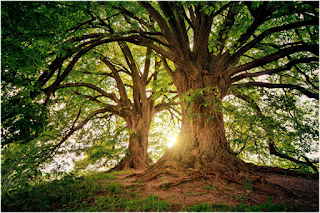10 Benefits of Nature Observation: Embracing the Wild with the BSA
The
great outdoors beckons, offering a treasure trove of experiences that can
enrich the lives of Boy and Girl Scouts. One fascinating skill that Scout
leaders should consider imparting, even if they lack prior experience, is animal
tracking. Beyond its surface appeal, animal tracking holds a plethora of
benefits that can shape young minds, deepen their connection to nature, expand
their critical thinking abilities, and foster a sense of stewardship for
the environment. So, whether you're a seasoned wilderness expert or a novice, there
are compelling reasons why BSA Scoutmasters and Parents should embark on this
journey of teaching nature observation and animal tracking to their
troops.
·
Tracking, including how to trail animals and
move silently through the wild were once Scout skills that were tested and
rewarded with rank and badges.
(BSA Merit Badge Update. 2010)
1. Wildlife Observation and Appreciation
Imagine
the thrill of spotting a set of tracks and deciphering the hidden story they
tell. Teaching Scouts how to visually track animals allows them to appreciate
the wonders of the natural world in new and exciting ways. It's a journey of
discovery and critical thinking that cultivates a sense of awe and respect for
the creatures that inhabit our planet.
- Tracking is like learning to read a book, once the basics are understood the stories that can be unlocked are limitless.
Even
without prior tracking experience, Scout leaders can instill a sense of
responsibility for the environment. Learning about animal tracks opens the door
to discussions about habitat preservation, the delicate balance of ecosystems,
and the significance of safeguarding our planet for future generations.
- Tracking & nature observation creates a sense of connection with the environment, understanding what the animals are doing and why.
While
you might not be a wildlife biologist, teaching animal tracking offers Scouts a
chance to engage in authentic scientific exploration. Encouraging them to
document tracks, observe behaviors, and make educated guesses about the
animals' activities fosters curiosity and scientific reasoning skills.
- Tracking is about critical thinking. The answers aren’t as important as the questions, the logic behind the process is what’s being taught.
- Any parent can teach it, they just need a simple foundation, a curious mind, and a scientific approach.
Through
animal tracking, Scouts can grasp the intricate web of life that exists within
an ecosystem. Discussions about predator-prey relationships, animal
adaptations, and the interconnectedness of species can be woven into your
teaching, even without an extensive background in tracking.
- Through the eyes of a Master Tracker: “An animal is an instrument played by the landscape.”
Tracking
animals involves more than following footprints; it cultivates essential
survival skills. Even as a novice, you can guide Scouts in learning about
camouflage, quiet movement, and patience – skills that can be invaluable in
various outdoor situations.
- When Tracking was originally taught to the Scouts it was called Stalking. The name was changed in 2010 to Tracking.
(BSA Merit Badge Guide. 1942)
6. Cultural and Indigenous Knowledge
Animal
tracking isn't just a scientific pursuit; it's deeply rooted in the knowledge
of indigenous cultures. Teaching Scouts about tracking can foster respect for
diverse traditions and a better understanding of the rich tapestry of
human-nature interactions.
- Expanding the Scout’s observational skills and critical thinking ability will compound over time and have a far reaching benefit.
As
a Scout leader, you have the power to ignite a lifelong passion for learning
about the natural world. Animal tracking makes nature education captivating,
teaching Scouts about various species, their habits, and the enchanting
mysteries of the wild.
- A tracker’s ability is measured by their level of awareness.
Infuse
your outdoor activities with a sense of adventure by incorporating animal
tracking. It adds an interactive dimension to hikes, camping trips, and nature
excursions that can captivate the imagination of Scouts, even if you're
exploring tracking alongside them.
- One of the tests for the Tracking Merit badge was the Scouts ability to move silently and undetected across the landscape.
(BSA Merit Badge Guide.
1942)
9. Leadership and Teamwork
Teaching
animal tracking encourages teamwork and communication as Scouts work together
to decipher tracks and signs. It's an opportunity for leadership development
and collaborative learning, irrespective of your own tracking expertise.
- Tracking and nature observation are excellent tools for gauging a Scouts ability and can be used for Merit Badge or Rank evaluations.
(Awareness games are a
simple and fun way to teach observational skills)
10. Wilderness Ethics
Imparting
the principles of ethical wilderness behavior is integral to the Scout
experience. Teaching animal tracking goes hand in hand with these ethics,
reinforcing the importance of minimizing human impact, respecting wildlife, and
leaving no trace.
- Animal tracking and nature observation are skills that can be used in everyday life
In
conclusion, while you might not be a seasoned tracker, the benefits of teaching
Scouts about animal tracking are far-reaching and impactful. You have the
chance to spark a lifelong passion for nature, instill a sense of environmental
responsibility, and nurture skills that extend beyond the wilderness. Embrace
the adventure and watch as your Scouts grow and uncover the hidden wonders
of the natural world through the art and science of animal tracking.





Comments
Post a Comment